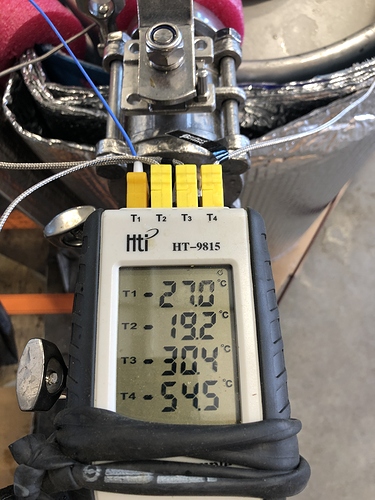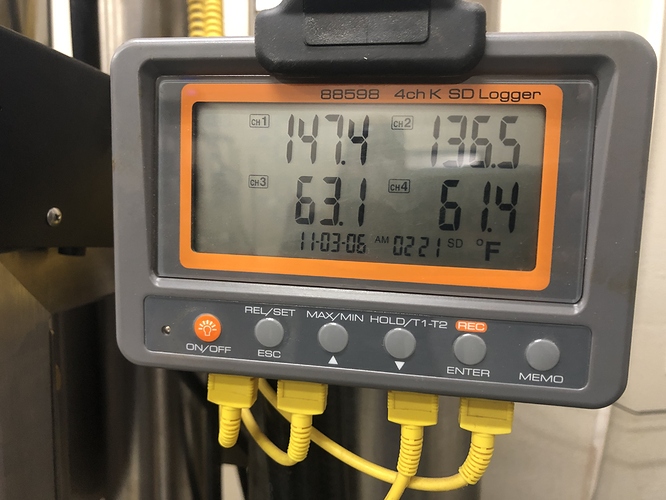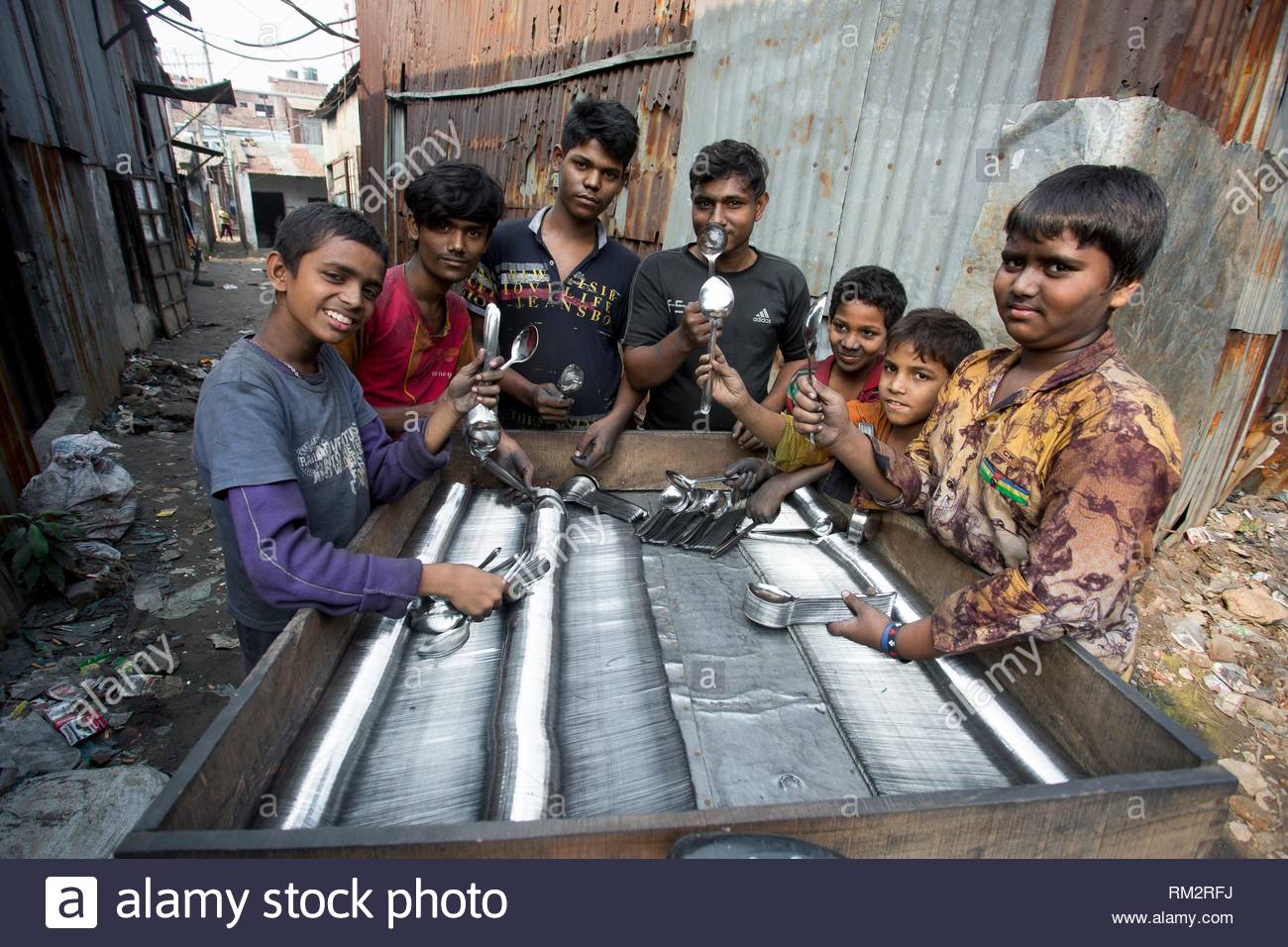I imagine you pointed out the issue. Our ethanol is brand new. We even bought a fresh drum from a different supplier to make sure it was not the alcohol. It must be with extraction.
between distillation sounds like a nightmare. I am currently about to do our usual extraction (while preparing to modify in order to reach and maintain proper temps) then let warm to room temp. After its at room temp I will do a pass over a carbon filter followed by either a mix of Tclay tincture then filter or make a cake and filter over that. Followed by a pass over micron filters. Potentially back through our particulate filter if a standard 10 um will not catch all residual AC and Clay.
I attempted to boil the water out of decarb but just ended up burning the product more than hoped for.
all media filters before recovery I should add. As to not add any heat until these properties are removed.
Right, you absolutely want to make sure you remove any adsorbents prior to decarb because you’ll risk isomerization.
A couple suggestions that might help you:
You can prepare your clay and AC in the same filter puck, it will save you a step.
I recommend filtering your cryo micelle while still very cold with some sort of fine particle filter (celite bed over .2 um filter would be standard). This is necessary to remove any kief/fines that will continue to color your extract as it warms up. There are a ton of good “inline” options to make handling easier.
Still allow your micelle to warm up before doing the AC and bentonite because it will work better. I recommend a similar particle filtration after the adsorbent scrub because you want to keep the fines out. A bed of celite underneath your AC/bento works well in this regard. 10um is not sufficient.
Lastly, I would check/record your pH after extraction and again after your polish. It would not be surprising at all to see that your AC made the oil acidic during the polish, which will certainly lead to reddening during distillation (and potential isomerization)
we currently use and Admiral particulate filter between and after each saturation/extraction at 5um,1um,and .5um. I will pop that out and run our post scrub solution through there. Thanks on the tip. unforunately .5um is the lowest I have right now. I could use more than one to help mitigate. Thanks again for the tips.
our AC comes in the form of a filter btw. sits right on top of our filter paper over a drain droyd. could I put the clay on top of that? or should it come after the AC?
The order probably doesn’t matter, we generally do the AC on top because it’s a bit finer. 0.5 um might be close. It might be worth looking into something a little bit finer. We use 0.1 um hydac cartridge filters that work freaking awesome but they’re $$$
Awesome. I will give it a shot. If we have vast improvements I will definitely look into one of those filters. Ideally, I can get the temps down on extraction then run my particulate followed by some sort of can filtration and be good there. But if we need to go through all of this we will. Do you know anyone making fire distillate from ethanol extractions without laborious media filtration steps?
I think you’ll find that when you get the process down it doesn’t really add many steps/too much effort to what you’re already doing. Give it a shot and let us know how it goes. The more information you collect while sorting out your process, the faster you’ll be able to get it all ironed out.
Lots of people make good disty from EtOH without using adsorbents but everything needs to stay cold all the time to make it work. Usually people add the adsorbent steps to their regular winterization practices
good move…but did you spend $10 on a proofing gauge?
how are you getting your solvent cold before you go again?
what temp are you actually extracting at?
how many points in your system can you give the temperature for?
are those filters insulated, or are you using them to warm up your tincture/ cool down your room air?
I recommend knowing as much as you can about what you’re doing. Collecting data is the first step in process improvement. If you don’t know that the fourth time your solvent hits your biomass it’s 25C warmer than it was when it hit the first bag, how will you ever address that issue.?
If the only temperature you’re taking is the one displayed on your chiller, you have almost zero clue what your solvent temp is.
Edit: 4 channel thermometers are awesome. Actually data-loggers are even better.
The ONLY powder I use is a celite 545 cake in my buchner funnel during filtering after soaking/washing. I pull +92% distillate each and ever run. This is super super dense distillate. Better have great dab tool to dig it out of the jars, or your gonna regret or damage the tool.
When we were at the lab that shall not be named, @cyclopath, I thought the distillate came out amazing with zero magic dirt or laborious amendments to our extraction procedure. Shouldn’t you include at least yourself there, too? Maybe me as well? Haha
![]()
you’ll blow my cover ![]()
That’s too funny! Hahaha I probably won’t make it to distillation today but i will let y’all how it goes.
That is a riot! I know spoon feeding is generally discouraged here and I even started with the boilerplate “use the search bar” but I didn’t have the heart to not answer questions for someone in need lol
haha well I cannot thank you enough and I hope my issues being brought to light will help others. thanks to your input and some of the other guys here mixed in with my other sources I was able to make some super piff today and can get my lab up and running. That being said, if you need a job in a fast growing company give me a shout. We are in Los Angeles currently.
https://www.nature.com/articles/srep19659
I was reading an article about the potential reasons eating clay minerals has a positive effect on digestion and noticed they mentioned something called “Dietary lipid adsorbent Montmorillonite”.
DLA-M is a water soluble component of Xinjiang montmorillonite clay and has adsorption capacity for vegetable oils. Can anyone help me find some more information on the water extraction process or maybe a source. I’m hoping to test the effectiveness of dewaxing via adsorption of this DLA-M


